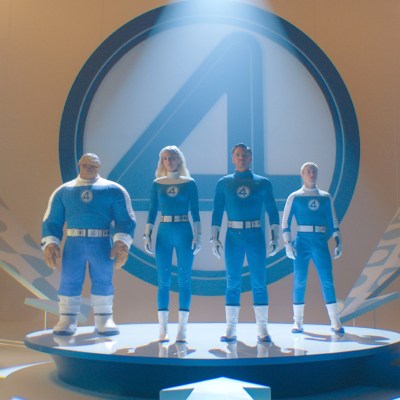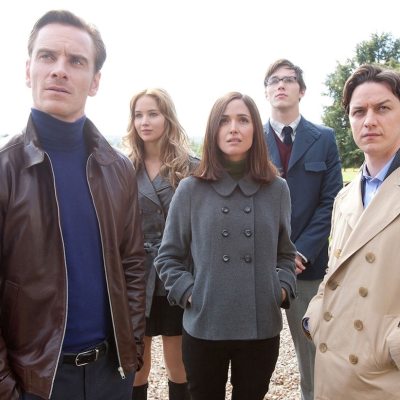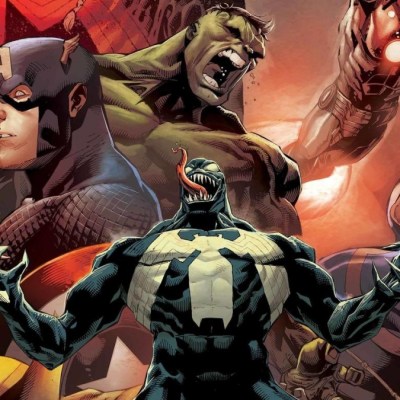X-Men: Complete Marvel Easter Egg and Reference Guide
We dug through the first X-Men movie for every easter egg, reference and factoid in it. For you!
X-Men, the 2000 film that launched the franchise, also managed to kick off our current golden age of superhero movies. It was followed by Sam Raimi’s Spider-Man in 2002 and director Bryan Singer returned for X2, the Best Comic Book Movie for about 5 years, in 2003. We are now deep into our new era, where there will be a comic book movie in theaters in perpetuity for the foreseeable future and we thought it might be a good time to take a look back at the film that started it all.
An introductory note about nomenclature: The main X-Men comics series went by two different names: X-Men until issue 141; then Uncanny X-Men until the series ended in 2011. However, there was also X-Men volume 2, which launched in 1991 and ran mostly uninterrupted and with the same name until 2001, when it briefly became New X-Men starting with issue 114, went back to being adjectiveless X-Men at issue #157 in 2004, and became X-Men Legacy in 2008’s issue #208. I will provide dates for any cited issues to make sure there is no confusion.
– The opening credits start with a voiceover from Patrick Stewart’s Professor X about mutants being the next stage in human evolution. This has been the philosophical underpinning of the X-Men since almost their first appearance in 1963. The movie came out in July of 2000 and spawned changes to the comics to reflect the movie universe, including Grant Morrison’s critically acclaimed and fan beloved New X-Men, which started with the idea that non-mutant humans would be extinct within three generations.
– It’s fitting that in the first scene of the X-Men franchise, the first use of mutant powers on the big screen is by a villain. We open the movie in a concentration camp as a young boy, separated from his family, uses his powers to fold a metal gate. That boy is Magneto, the X-Men’s first villain from 1963’s X-Men #1.
Magneto was created by Stan Lee and Jack Kirby as a generic villain. It wasn’t until much later – Uncanny X-Men #150 in 1981, to be precise – that Chris Claremont added in his backstory as a Holocaust survivor. The movie telling isn’t strictly accurate to the comics: his family was killed in the Warsaw ghetto, then he went to Auschwitz, and all of this is detailed in Greg Pak and Carmine di Giandomenico’s superb Magneto Testament limited series from 2009.
– Anna Paquin’s Rogue is the first mutant we meet in the present day. She was first introduced by Claremont and Michael Golden in 1981’s Avengers Annual #10 as a member of the Brotherhood of Evil Mutants. Her origin was fleshed out in dribs and drabs over the course of the next 20 years, but it wasn’t until this movie that we heard her real name, Marie.
The movie version of her origin leans heavily on the one we first saw as part of the 1992 cartoon: her memory and power-draining ability first manifests during her first kiss with a boy named Cody, leading to her running away.
– The scene with Jean Grey testifying before the United States Senate about mutants takes place in probably the nicest Senate hearing room ever put on film. It’s also packed with references.
Let’s take this one piece at a time:
– Jean Grey, played here by Famke Janssen, is one of the original five X-Men and one of three to have a role in this movie. She was introduced in X-Men #1, created by Stan and Jack, and was the only girl on the team. She’s telepathic, telekinetic, and absurdly powerful. Later in the comics, she would be impersonated (then imbued with) the Phoenix Force, a fundamental creation energy in the galaxy on par with Galactus. This was loosely adapted in X-Men 3: The Last Stand and was hinted at in X-Men: Apocalypse.
– Senator Robert Kelly was created by Claremont and John Byrne in X-Men #135 in 1980. He was a key fomenter of anti-mutant hatred, which is translated very well by a script that lifted lines directly from Joe McCarthy’s communist witch hunts in the 1950s and put them in Kelly’s mouth (just replace “mutants” with “communists in the State Department” in Kelly’s speech here). He introduced the Mutant Control Act in the pages of Uncanny X-Men, the first time the idea of registering or licensing superheroes had ever been discussed, but a trope that has been repeated a thousand times in comics (most notably in Civil War) and film (here and in…uh…Captain America: Civil War).
Kelly’s assassination at the hands of Mystique was the instigating event behind the legendary “Days of Future Past” comics, which in turn loosely inspired the movie of the same name. In the comics, Kelly would come around on mutants in part because he had been saved by them, but would later die in the story that reset the X-universe just ahead of Morrison coming on board (in an arc called “Dream’s End” that started in Uncanny X-Men #388), so about the same time as the movie’s release.
Read more
– On Senator Kelly’s list of names is “a young girl in Chicago who can walk through walls.” That would be Kitty Pryde. Katherine Pryde was first introduced in X-Men #129, and was by far the youngest member of the team to that point. She was the focal character in “Days of Future Past” (the comics) along with Senator Kelly.
She appears as a sort of running cameo later in this movie; returns for a brief cameo as a different actress in X2 a few years later, and then gets speaking lines and a fancy new big shot actress for X-Men 3: The Last Stand, where she is played by Ellen Page. Page returns for the movie adaptation of Days of Future Past, where her ability to phase between molecules and walk through solid objects somehow allows her to send Wolverine’s mind back in time.
Kitty has gone through several code names in her career: she began as Sprite, then changed it to Ariel for a hot minute, then got possessed by a ninja warlord and became an assassin but then got better and changed her name to Shadowcat.
– This movie introduces us to the most inspired casting in any comic book movie ever (until Cate Blanchett shows up as Hela): Patrick Stewart as Professor Charles Xavier, and Ian McKellen as Magneto, both of whom are watching the hearing from the gallery. Professor X was first introduced in X-Men #1 in 1963 and created by Stan and Jack. He is the world’s most powerful telepath and a noted jerk. By now, we all know who McKellen and Stewart are, but it’s worth noting that their legendary friendship began on the set of this movie.
Seriously, look at these two awesome people:
– The set designers made the wheels on the Professor’s chair very conspicuous Xs as a nod to the man’s narcissism. Joking, he designed the wheelchair to stay on brand with the team, and they’re called the X-Men because in the comics, the gene for their mutations is carried on the X chromosome.
In the films, the reason he’s in a wheelchair isn’t explained until First Class, while in the comics there have been six or seven different reasons (Lucifer dropped boulders on him; Magneto did it; it’s a psychosomatic reaction to the Shi’ar cloning process, etc.). But he’s still definitely a narcissist. Stay tuned.
– Likewise in the movies, the early friendship between Professor X and Magneto is a running theme. First Class again explains the genesis of their movie friendship. Unlike the movies where they met having sexy parties with the CIA, in the comics they first encountered each other in Haifa, Israel. Magneto was making a little extra cash working as an orderly at a psychiatric hospital for holocaust survivors, while Charles was healing a woman in a coma so he could date her, father a child with her, and bounce. If you don’t believe me, wait until our reference guide for Legion.
– Hugh Jackman was not the first choice to play Wolverine. That honor was Dougray Scott’s, but he lost out when filming on Mission Impossible II, where he was playing the main villain, ran over schedule. Jackman was an unknown Australian theater actor at the time. Hard to believe now, 17 years later when he’s a megastar.
– Wolverine was NOT created by Stan Lee, Jack Kirby or Chris Claremont! He first appeared in 1974, in Incredible Hulk #180, where he was created by Len Wein and Herb Trimpe as a Hulk villain. Wein then brought him over to the X-Men in Giant Sized X-Men #1 in 1975 as part of that issue’s soft reboot of the series.
– Wolverine’s history was largely a mystery in the comics until shortly after this movie, 2001’s Origin. What little we knew before that was that his name was Logan; he was Canadian; he had metal bones and claws on his hands (given to him by the Weapon X program) and he could heal really fast from anything. Later in the movie, Jean tells the Professor that Logan’s healing factor makes it tough to pinpoint his real age. She’s right: according to Origin, Logan is somewhere in the vicinity of 175 years old.
It also explains the cigars he smokes – Marvel instituted a no smoking policy for their characters in 2001 at the behest of then-Editor in Chief Joe Quesada, but they had acknowledged that it was bad and that he only did it because of his healing factor for some time prior to the official ban.
– And the healing factor is the reason for Wolverine’s metal skeleton. Without it, he would have been poisoned by the metal in his blood. That metal in both the comics and the movies is Adamantium, the hardest metal known to man and mostly unbreakable. It was originally created in the pages of Avengers, though – Roy Thomas and Barry Windsor-Smith dreamed up the fictional metal in 1969 and used it to coat Ultron.
– Wolverine’s claws were originally (in the comics) thought to be a byproduct of Weapon X program, the paramilitary hit squad (that was later revealed to be the tenth iteration of the government’s anti-mutant Sentinel development program) that Logan ran with for a time and where he got the dog tags Rogue noticed around his neck. In 1993’s Wolverine #75, after Magneto rips all the adamantium from Wolverine’s bones, we discover that the claws were actually made of bone. Note: this story is super dumb.
– It’s interesting to note that the claws were never intended to be part of Logan’s skeleton, and that’s why so many images of Wolverine have those little metal housings on his gloves for the claws to come out of. The housings were routinely depicted as part of his hands until about this movie, where like Jackman’s on-screen image, comic artists started drawing them as coming from between his knuckles.
– Sabretooth was created by Claremont and Byrne (fake shock face!) for 1977’s Iron Fist #14 (actual shock face!). As happened back in the day, characters who weren’t finding purchase in the book in which they were introduced (see also: Wolverine, Rogue), Sabretooth’s creators brought him over to another book where they took off.
– Sabretooth’s real name is Victor Creed, and he’s played here by Tyler Mane, whose official bio lists him as “some wrestling guy.” He was later portrayed on film by Liev Schreiber, an actor made famous by his role as Ross “The Boss” Rhea in the second greatest hockey movie of all time, Goon. He has many of the same powers as Wolverine, and was later retconned to be Logan’s brother by 2001’s Origin.
– Storm and Cyclops first appear in the Canadian wilds to rescue Rogue and Wolverine from Sabretooth. Later on in the movie, we hear the Professor tell Wolverine “Cyclops, Storm and Jean were some of my first students.” That’s not quite how the comic goes – Jean and Cyclops were first introduced as a member of the original team in the first issue of the series, while Storm was created by Wein and Dave Cockrum for Giant Sized X-Men #1. The movie does a great job of not confusing Cyclops’ powers like many casual observers do: he metabolizes energy into concussive blasts from his eyes. They do not shoot heat and are not lasers.
– Storm’s real name is Ororo Munroe. She is an orphan from Kenya who grew up on the streets of Cairo, which explains Halle Berry’s occasional attempts at a whiff of a generic “African” accent in this movie. She has the ability to control the weather.
– Toad and Mystique are the last two members of the Brotherhood of Mutants (they mercifully did not use the “Evil” in the movie) to be introduced in the movie. Mortimer Toynbee was introduced in X-Men #4 in 1964, created by Stan and Jack as a member of the Brotherhood of Evil Mutants. Toad’s powers include superhuman-ish strength and agility, the ability to spit some kind of sticky goo from his mouth, and a prehensile tongue that he uses to eat a bird. He’s played in this movie by Ray Park, who had previously been Darth Maul and is more commonly known today as 2001 Andy Serkis.
– The Brotherhood of Mutants here is a movie version of the Brotherhood of Evil Mutants from the comics, Magneto’s first team from back in X-Men #4. On that team were Magneto, Toad, Mastermind (a telepathic illusionist who we’ll meet a version of in X2), and Magneto’s children, Quicksilver, and the Scarlet Witch.
– Magneto’s hideout looks like a hollowed out rock, and that’s because it likely is. His most famous hideout is an actual asteroid: Asteroid M, which if you go by X-Men naming conventions probably got its name from all the Metal in it and definitely not from it belonging to Magneto. An Asteroid M orbited the Earth from 1964 (in X-Men #5) to 1991 (in X-Men #3 – see how I eliminated confusion there?) as Magneto’s home base and hideout to his Acolytes or to the Brotherhood of Mutants or whatever group was following him at the time.
Read more
– This movie seemed like it made a sincere effort to include stuff for the people who geek out over technical diagrams of hideouts: Wolverine gets a grand tour of the X-Mansion, and it is as organized as the nerdiest of secret files comics.
– We see Cerebro (created in 1964’s X-Men #7), the telepathic amplifier that allows the Professor to find mutants around the world from the comfort of his own paramilitary Choate. We also get hints of the Danger Room, the training facility that has been at times robotic (when it was first introduced in 1963’s X-Men #2), at others Holodeck-y (after the X-folks met and befriended the Shi’ar following the original Phoenix saga), and still at others sentient and super pissed off about being unwittingly enslaved by Professor X (Joss Whedon’s excellent Astonishing X-Men from 2005, also remember what I said about “noted jerk?” Still more to come on that).
– We also get to see the X-Jet, the Blackbird. This is based on a real life jet, the SR-71 Blackbird, because Chris Claremont (the writer when it was introduced in 1975) is a hella plane nerd. Unlike the IRL SR-71, the X-Men’s Blackbird actually works and doesn’t leak fuel when it’s not in motion.
– Remember how Professor X is a jerk? Well, he’s an ultra powerful telepath, and he spends most of the middle third of the movie poking around in Logan’s head. Logan’s memory is shot from the process that bonded the adamantium to his skeleton, and while the Professor has no qualms about using stuff he plucked from Wolverine’s brain to keep him from running off, he doesn’t actually tell him anything about those locked memories. And he’s in there without ever asking permission. Yup, Professor X is in fact quite the jerk.
– Speaking of Kitty Pryde, we do get to see her in action in her first running cameo appearance shortly after Wolverine wakes up in the mansion. She’s in a class with Iceman, Rogue and Jubilee, and she runs through the door rather than open it.
– Iceman’s real name is Bobby Drake. His age is different in the movies from the comics: he’s one of the original five X-Men, a contemporary of Jean and Cyclops rather than a student. He has little more than a cameo here, but Shawn Ashmore returns in a more central role in every subsequent movie that stars the original cast.
– Jubliation Lee is another story. Originally appearing in 1989’s Uncanny X-Men #244 and created by Claremont and Marc Silvestri, Jubilee is an orphaned California mall rat with the power to create energy explosions that resemble fireworks. Jubilee has been through some shit since 1989, though: in the comics, she was depowered, joined a group of ex-heroes pining for a second chance, and was finally turned into a vampire. In the movies, she’s been played by three different actors in three movies who have had a collective zero lines if you only count finished cuts – she was originally a larger part of X-Men: Apocalypse, but her lines ended up in the deleted scenes portion of the Blu-ray.
– One huge problem with the movie is how everyone talks about the Xavier School for Gifted Youngsters being in “Westchester New York.” The only time anyone calls it by its county name rather than the town’s is when they are arguing about where upstate New York starts (it’s everything from Putnam and Orange counties north, FYI) or when they’re arguing about property taxes. “You’re in Westchester, person we found in the woods of Canada who was unconscious until now! Oh, Westchester is a county in New York and two sentences later you still have no frame of reference for where that might be.” Get it together, guys.
– By the way, the school’s address is 1407 Graymalkin Lane, Salem Center, NY. That is a real town, but not a legit address despite Google Maps marking someone’s driveway as Graymalkin Lane.
– A fun bit from the tour of the recruitment video-style tour of the mansion the Professor gives Logan: at one point during the basketball game on campus, when the kid passes the basketball to himself and you hear another kid yell “Hey! No powers!” Both the super-powered sports game and the “no powers!” objection have a long tradition in X-Men comics, dating back to 1977 when the team first played baseball together in issue #110.
– The stables at the X-Mansion have carpeting. That’s not really an easter egg, it just seems foolish.
– The last new character we meet in this movie is the shape shifter Mystique. Raven Darkholme was originally (like Rogue, her adopted daughter) a Ms. Marvel villain, introduced in 1978 by Claremont and Jim Mooney in Ms. Marvel #16. She can impersonate anyone, and she pretty much does over the course of this movie.
– The first person she poses as here is “Henry” or “Mr. Gyrich,” an aide to Senator Kelly. That would be Henry Peter Gyrich, and he was an Avengers character for about 15 years. Starting in 1977 when he was created by Jim Shooter and George Perez, he was the NSA’s liaison to the Avengers. It wasn’t until the X-Men cartoon in 1992 that he started to be associated with Marvel’s mutants – he showed up in the first episode of the show along with Bolivar Trask and pushed the Sentinel program. Here he only makes a cameo, impersonated by Mystique as we hear that the real Gyrich was apparently “mauled by a bear” (that was totally Sabretooth).
– Cyclops and Jean Grey’s relationship is a bit of a plot point here. In the comics, it’s a typical story of boy meets girl (X-Men #1, 1963), boy is too chicken to tell her how he feels, boy finally nuts up (X-Men #32, 1967), girl becomes cosmic force of destruction and commits suicide on the moon rather than destroy another civilization (Phoenix Saga, X-Men #101-138), boy falls for girl’s clone (Uncanny X-Men #168), boy has child with clone girl (Uncanny X-Men #201), boy finds resurrected first girl and bails on his family without another word (X-Factor #1), boy has to defeat scorned, malevolent, demonic ex (“Inferno,” so a bunch), and so on. The movie pretty faithfully adapts the love triangle that existed between them and Wolverine.
– The song playing while Wolverine steals Cyclops’s motorcycle is “Atom Bomb” by Fluke, and I swear to God I didn’t know it was from the Wipeout XL soundtrack when I would get really drunk and play F-Zero on my Gamecube in my dorm room.
– Sabretooth has some real issues with women. I won’t run through all of them, but if you’re in the mood to be depressed about fridging, look up Silver Fox (one of Wolverine’s exes), Psylocke, Birdie, Misty Knight, Mystique, and here, Storm.
– Not to beat a dead horse or anything, but there are like, 55 train stations in Westchester. There is no “Westchester Train Station” like it says on the board of this movie’s off-brand Grand Central Terminal.
– Mutation in the X-universe is caused by evolution on the X chromosome, but Magneto’s plan (to use his giant machine to throw off a bunch of mutation-triggering “radiation”) isn’t without comic precedent: back when the X-Men first started, they did explain mutations as being caused by radiation, back when radiation caused everything.
– Also with comic precedent: Wolverine setting off metal detectors when he walks through them. The earliest mention of that I could find was in Kitty Pryde & Wolverine #2 in 1984, when Logan is flying to Japan and he sets off the metal detectors at JFK Airport.
– Things that may be hard to understand now given where the comics are at, but that were either revolutionary or made perfect sense at the time: the leather costumes, which were an attempt at making the X-Men look more “realistic” and were almost immediately adopted by the comics (then put back away when Joss Whedon came on board for Astonishing X-Men); Cyclops as the golden child of the X-Men – he was always the Professor’s pet in the comics until about when most of the world’s mutants were depowered in House of M, when he became a militant who eventually died from The Struggle; and Rogue’s shock of white hair being something we need explained, which thankfully the movie does.
– The movie closes with Wolverine heading to “an abandoned military compound at Alkali Lake,” which is precisely where we pick up X2 a few years later.



